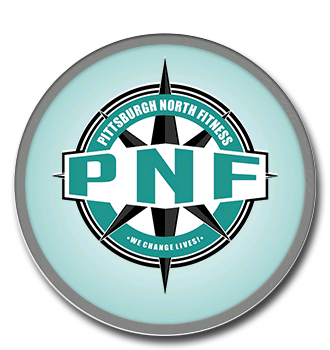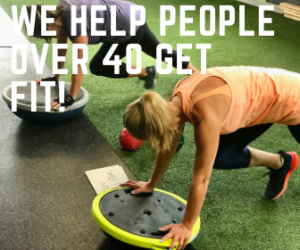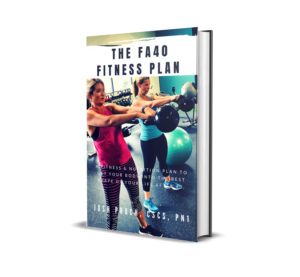Five Exercises To Avoid After 40
By: Josh Proch, CSCS, Pn1
Just because an exercise exists doesn’t mean it should be done. Some exercises are obviously better and more effective than others, but there are a handful that can do more harm than good.
Here are five exercises to avoid if you are over 40.
#1. Burpees.
This is probably one of the worst exercises that has become hugely popular in the past decade. To perform it you literally belly flop to the floor and catch yourself just before you face plant into the floor and jump back up.
It’s said that the Burpee burns tons of calories, but…it really doesn’t. At least not more than many other exercises.
Instead, it places high stress on the wrists, excessive lower back arching, followed by excessive lower back rounding as you jump back up from a horrible crouched squat position. All this leads to injured wrists, elbows, shoulders, lower backs, and knees.
Instead, perform a Controlled Burpee. Squat down placing your hands on the floor, walk your legs back, do a push up, walk your legs back up and rock back into a squat, then stand up. All of this is done controlled and slow. 10 Burpees this way is harder and burns more calories than regular burpees.
#2. Sit Ups/Crunches.
Wondering why you keep “strengthening” your abs, but your low back pain doesn’t get better.
It could be because you are doing the wrong exercises. All of those sit-ups and crunches place high shear stress on our lower back joints and discs that will eventually wear them out to the point of rupture. If you already have a low back issue this will aggravate it more. And don’t think that because you are healthy and have never had a back issue means you are safe; overtime you will wear out the lower back tissues by doing these exercises.
Instead, use McGill Sit Ups, and Straight Leg Sit-Ups. These will train your abs more effectively without placing your back at risk.
#3. Back Squats.
Assuming you are not playing in the NFL or competing in lifting competitions there is no reason any client past 40 should be doing back squats.
The reason is due to the placement of the weight and the body position required to perform a Back Squat safely.
When the weight is placed on the back of the body it is moved behind the midline of the body and creates higher compressive forces on the spine. This gets worse when proper body position cannot be maintained. Meaning that the client cannot place the bare bar, no pad, in a low position on the upper back, create great thoracic (upper back) extension without creating excessive lower back extension, has the shoulder mobility to hold the bar in tight in the low position, has the core stability to maintain a 45 degree trunk position throughout the movement, has the hip mobility to get to a squat position without the butt rolling under (aka butt-winking), and then has the ability to ankle dorsi flex (bend the ankles forward) to keep the feet flat on the floor.
Experienced advanced lifters struggle to do all of this well and the chances that the average client past forty will be able are slim.
Instead, focus on Front Squats. You cannot use as much weight, which is only ego, but they work just as well and keep the body safe.
#4. Hollow Holds.
Hollow Holds are the exercise of the year. Scroll through Instagram and you will be hard pressed to not find one or two young fitness professionals touting them.
But here is the problem. Most clients lack the ability and core strength to do them well. By well, I mean straight body position from heels to fingertips with the low back slightly pressed into the floor.
Instead, we see the low back excessively arched, knees bent, upper backs rounded. Now, take the average client who sits all day and put them into this position. First, they lack the core strength to hold the proper position, creating an excessive lower back arch that is placed under high tension due to holding the legs up, which is a recipe for injury. Second, from sitting all day the body already has a pelvis that is tilted forward and shoulders that are rounded, so by doing a Hollow Hold you are reinforcing bad posture at best and stressing the low back at worst.
Instead, do Front Planks to promote proper body alignment and strength the core. They are not as sexy but work better.
#5. Chest Fly’s.
The shoulder is a delicate joint, injure it and it will affect everything you do, including your ability to workout. Chest Flies are one of those exercises that provides little benefit but has a high risk to the shoulder associated with them.
This is because when then arm is extended out the side the humeral head, the end of the upper arm that attaches into the shoulder joint, is rotated and then grinds across the shoulder capsule (aka glenohumeral joint). Overtime this grinding will wear out the shoulder capsule and can cause a tear in the rotator cuff, not something you want to have happen. Additionally, if you already have cranking shoulders chest flies will make them crankier.
Instead, do chest presses and TRX Push Ups. These movements will strengthen the chest muscles while keeping the shoulder in a safe position. If getting that stretch in your chest is what you are thinking is working your chest, it’s not, but the TRX Push Up will provide the same feel without the risk.
There are thousands of exercises out there that you can choose from to keep the variety in your workouts fresh without injuring your body. If you stay away from these five you will feel better and be able to exercise injury and pain free.
If you are looking to get started with a fitness plan check out our 30-Day Personal Training Experience…
https://pittsburghnorthfitness.lpages.co/30-day-personal-training-experience/





